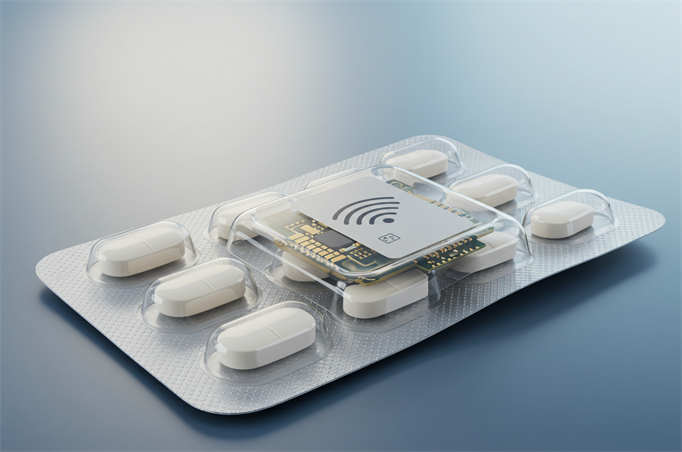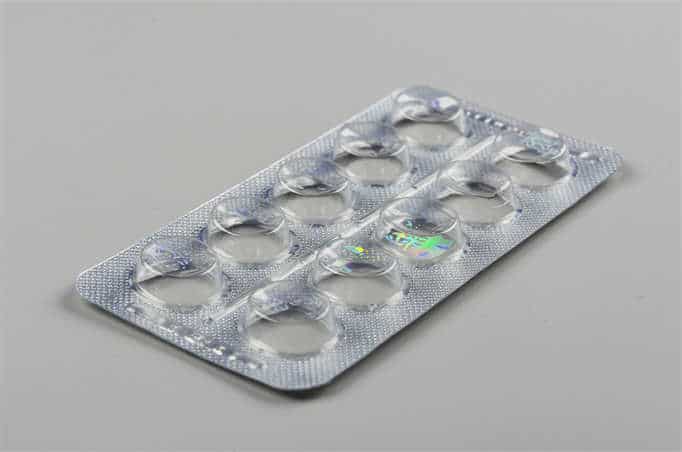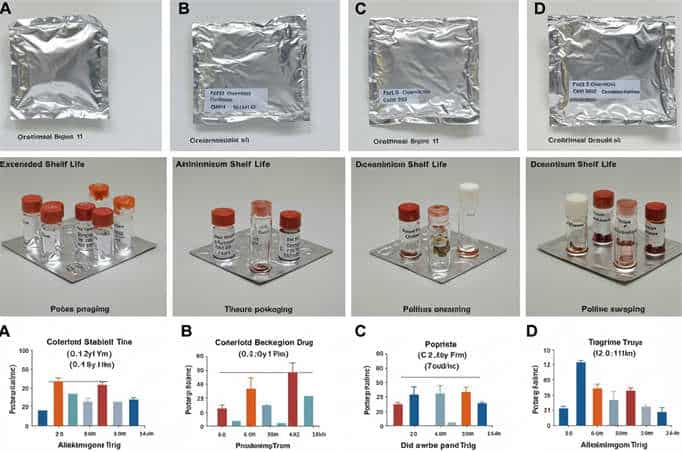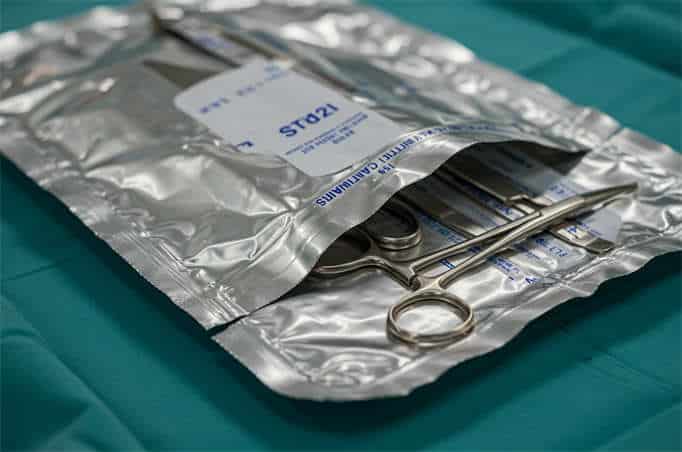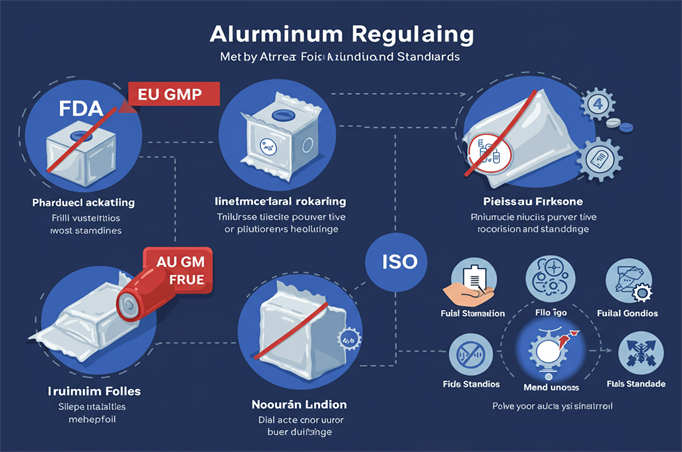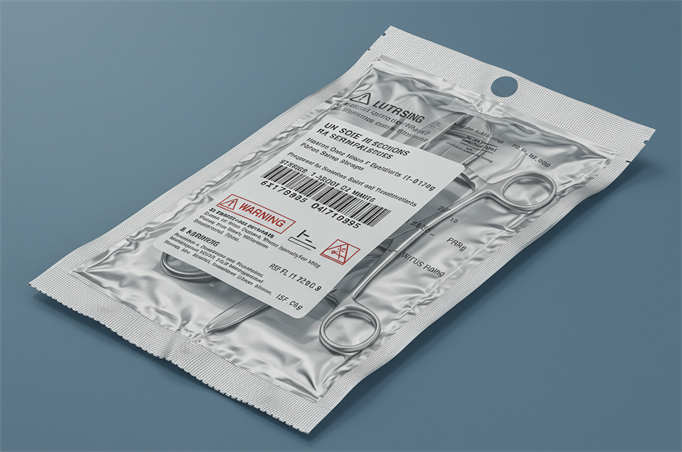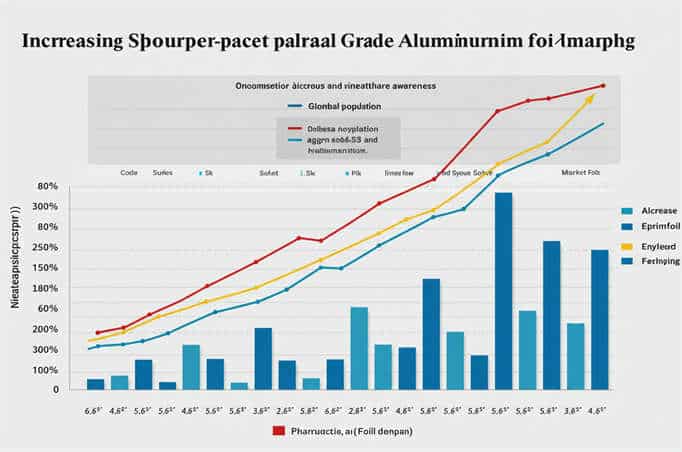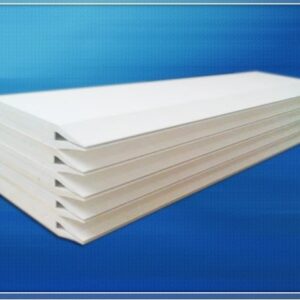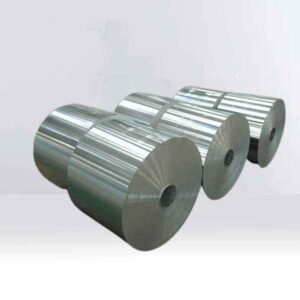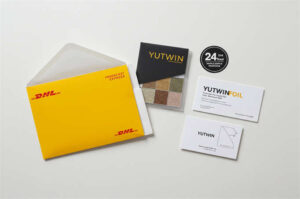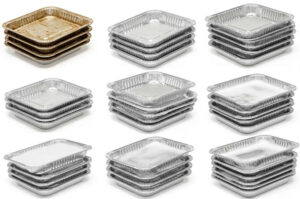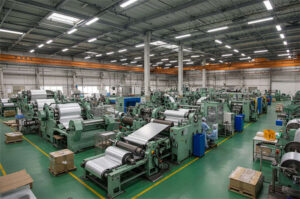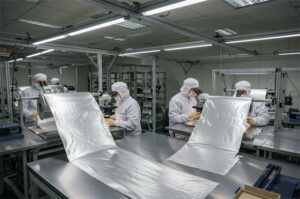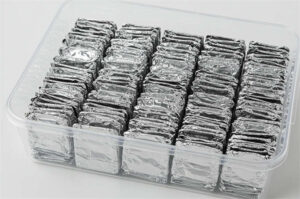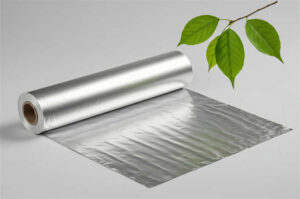Wide Applications of رقائق الألومنيوم in the Medical Industry
Precision Packaging for Modern Pharmaceuticals
In today’s pharmaceutical industry, selecting the right packaging material directly impacts drug safety and efficacy. Aluminum foil, a metal only a few microns thick, has become a core component in pharmaceutical packaging due to its unique physical and chemical properties. From blister packs for tablets and capsules to sealing materials for injectables and moisture-proof composite films to child-resistant designs, aluminum foil is the first line of defense throughout a drug’s lifecycle with its superior barrier properties and stability.
Technological Advancements Driving Industry Standards
Introducing the Guidelines for the Application of Pharmaceutical Blister Packaging (T/CNPPA 3027-2024) has reinforced recent advancements in pharmaceutical packaging. This guideline refines the application standards for aluminum foil, detailing its composite processes with PVC and PVDC while establishing key performance indicators. For example, the oxygen transmission rate must be below 0.002 g/(m²·24h), and the water vapor permeability must not exceed 0.5 g/(m²·24h).
These stringent standards reflect the increasing demand for drug stability and drive manufacturing innovations. Like the 8011 alloy, rugged aluminum foil leverages cold-formed technology to achieve blister size precision within ±0.1 mm. This accuracy ensures reliable packaging solutions, especially for highly sensitive drugs like biologics.
Multi-Layer Protection for Enhanced Drug Safety
Aluminum foil’s exceptional protective ability stems from its multi-layer composite structure. In a standard PTP blister pack, aluminum foil is the cover layer, sealed with PVC through heat-sealing technology, forming a “protective lacquer-aluminum base-sealant layer” sandwich structure. This design blocks over 99% of UV light and oxygen while maintaining sealing integrity with a heat-seal strength of ≥7.5 N/15mm.
For child-resistant packaging, aluminum foil integrates with paper-based materials, increasing opening difficulty to prevent accidental ingestion. Additionally, its microbial barrier properties make it indispensable for sterile injectable packaging. In prefilled syringes, aluminum-plastic combination caps undergo drop-ball impact tests (28.6 mm steel ball, 600 mm drop height) to verify their resistance to breakage.
Sustainability and Smart Packaging: The Future of Aluminum Foil
Sustainability has become a focal point in the aluminum foil industry. Studies show that eco-friendly coatings, such as water-based heat-seal lacquers, reduce production energy consumption by 30%. Meanwhile, adopting “cold-form aluminum” technology minimizes energy use during thermoforming.
At the same time, aluminum foil is rapidly integrating with innovative packaging technologies. RFID-tagged blister packs enable real-time drug traceability, while thermochromic ink printing visualizes improper storage conditions. These innovations enhance drug safety and support better medication adherence for patients.
Blister Packaging for Pharmaceuticals
Aluminum foil is crucial in blister packaging, often combined with materials like PVC (polyvinyl chloride) to package tablets and capsules. This packaging solution provides excellent moisture resistance, ease of use, and safety, effectively shielding medications from external factors and ensuring product stability and quality.
Composite Packaging Materials
Aluminum foil is frequently laminated with paper, high-polymer compounds (such as PVC and PVDC), and other materials to create high-performance composite packaging solutions. These composite materials merge the superior barrier properties of aluminum foil with the flexibility and processability of different materials, making them widely used in pharmaceutical packaging.
Sealing for Ampoules and Injection Vials
Aluminum foil is a preferred sealing material for ampoules and injection vials due to its high barrier properties, moisture resistance, and light-blocking capabilities. It effectively prevents external contamination and preserves the integrity of injectable drugs.
Medical Equipment Packaging
Aluminum foil is also extensively used in packaging medical devices such as surgical instruments and protective films. Its exceptional barrier properties, reliability, and strength help maintain sterility and safety during storage and transportation.
Advantages and Value of Aluminum Foil in Pharmaceutical Packaging
Ensuring Drug Safety
Aluminum foil offers superior moisture resistance, light-blocking properties, oxidation resistance, and airtightness. It prevents medications from becoming damp, oxidized, or degraded due to light exposure, preserving their efficacy and stability.
Compliance with Safety Standards
Aluminum foil is a non-toxic, pollution-free packaging material that meets the stringent safety requirements of pharmaceutical packaging. Manufacturing environments typically adhere to GMP (Good Manufacturing Practice) standards to ensure packaging safety.
Enhancing Market Competitiveness
Aluminum foil packaging improves the aesthetics of pharmaceutical products, making them more recognizable and enhancing their market value and competitiveness.
Market Trends and Future Prospects
Growing Demand
With the global aging population and increasing awareness of healthcare and drug safety, the pharmaceutical market continues to expand, driving demand for pharmaceutical-grade aluminum foil.
Technological Advancements
Aluminum foil is continuously evolving to meet diverse pharmaceutical packaging needs. Innovations include advanced anti-counterfeiting features, enhanced barrier properties, and extended shelf life. Moreover, the growing focus on sustainability is leading to improved production processes, reduced environmental impact, and increased recyclability.
Intensifying Industry Competition
The pharmaceutical aluminum foil industry is highly competitive. Companies with strong innovation capabilities and eco-friendly advantages are better positioned for success. While China has developed a comprehensive industrial chain for pharmaceutical aluminum foil, foreign companies still share the high-end market segment.
Aluminum foil plays an irreplaceable role in the pharmaceutical industry. It ensures drug quality and safety while enhancing product value. As the pharmaceutical sector continues to grow and innovate, aluminum foil will remain a vital material with a promising future.
Impact of Aluminum Foil Packaging on Drug Shelf Life
Aluminum foil packaging significantly extends drug shelf life in multiple ways:
Enhanced Protection for Longer Shelf Life
- Moisture Resistance: Aluminum foil prevents external moisture from entering the packaging, preventing mold growth and clumping in moisture-sensitive drugs.
- حماية من الضوء: It provides complete light-blocking, preventing photodegradation in light-sensitive medications such as vitamins.
- مقاومة الأكسدة: Aluminum foil prevents oxygen from interacting with drugs, reducing oxidation risks and extending shelf life, especially for antibiotics and cardiovascular medications.
Chemical Stability for Drug Safety
Aluminum foil is chemically stable and does not react with pharmaceuticals or release harmful substances, ensuring drug safety and preventing degradation caused by packaging interactions.
Physical Protection for Drug Integrity
With its high strength and durability, aluminum foil shields medications from mechanical damage such as crushing, impact, or deformation, maintaining drug stability throughout their shelf life.
Microbial Contamination Prevention
The airtight sealing properties of aluminum foil effectively prevent bacteria, fungi, and other microorganisms from contaminating drugs, ensuring their safety and efficacy.
Stable Packaging Environment
Aluminum foil packaging creates a controlled microenvironment, protecting medications from external temperature, humidity, and light fluctuations, further extending their shelf life.
Regulatory Compliance for Pharmaceutical Safety
Aluminum foil meets strict pharmaceutical packaging regulations and does not introduce secondary contamination, ensuring that drugs remain safe for patient use throughout their intended shelf life.
Is Aluminum Foil Packaging Suitable for All Medications?
While aluminum foil is widely used in foil meaning pharma packaging, it is unsuitable for all medications. Here’s a breakdown of its applicability:
Suitable Applications
- Tablets, Capsules, and Solid Medications: Aluminum foil protects solid pharmaceuticals from moisture, oxygen, and light exposure, ensuring stability.
- Powder and Granule Medications: Its superior barrier properties prevent moisture absorption and caking, maintaining free-flowing consistency.
- Liquid Medication Pouches: Aluminum foil-based laminates are ideal for liquid medications like rinsing solutions, preventing leakage and microbial contamination.
Limitations of Aluminum Foil Packaging
- Liquid Medications: Aluminum foil may not provide sufficient leak protection for some liquid pharmaceuticals that are better suited for glass or plastic bottles.
- Unique Formulations: Creams, gels, and ointments are typically better packaged in aluminum tubes, which offer superior resealability and protection.
- Drugs Requiring Breathable Packaging: Certain medications require specific permeability or anti-static properties, which aluminum foil may not provide.
25μm Hard Blister Foil in Pharmaceutical Packaging
Material and Features
- Composition: Typically made from 8011 aluminum alloy with high tensile strength and ductility.
- السُمك: 25μm, balancing strength and processability.
- معالجة السطح: Includes heat-sealing coatings for secure bonding with PVC and printable layers for branding.
Performance Characteristics
- Excellent Sealing: Ensures a tight seal with plastic substrates, preventing moisture and oxidation.
- Tearability: Maintains sufficient flexibility for easy blister opening.
- Superior Protection: Blocks light, moisture, and oxygen, preserving drug stability.
اتجاهات السوق
- Global Market: 25μm pharmaceutical aluminum foil is common in the U.S., though there is a trend toward thinner 20μm variants.
- China Market: The Chinese foil meaning pharma market is expanding, with demand for various thicknesses, including 25μm, remaining strong.
How is Hard Blister Foil Used in Pharmaceutical Packaging?
Manufacturing Process
- Forming Stage: Hard blister foil is paired with forming materials (PVC, PP, PET) to create blister cavities using thermoforming or cold forming.
- Filling Stage: Medications are precisely placed into the blister cavities using various automated filling methods.
- Sealing Stage: Using heat and pressure, the formed blister pack is sealed with rugged aluminum foil.
Opening Mechanisms
- Push-through is common for solid-dose medications using structures like OP/AL/HSL or OP/AL/PVC.
- Peel-Off: This method is used for PET/AL/HSL or Paper/AL/HSL structures. It allows users to peel the foil before extracting the drug.
- Peel-and-Push: A combination of both mechanisms for added safety and convenience.
Packaging for Different Formulations
Rigid blister foil is primarily used for solid dosage forms, including:
- Tablets, capsules, and granules require moisture and oxygen protection.
- Lozenges and other formulations require precise humidity control.
Design Considerations
- Standardized Blister Sizes: Optimized for cost efficiency and easy mold compatibility.
- Child-Resistant Designs: Adjustments to blister shape and foil composition prevent accidental ingestion by children.
في مواد يوتوين الجديدة, we continuously innovate to enhance pharmaceutical packaging, ensuring top-tier quality, safety, and sustainability for the industry.
Aluminum Foil: From Passive Protection to Active Innovation
As the pharmaceutical industry moves towards precision medicine and personalized treatment, aluminum foil packaging has evolved beyond a simple container. It now represents a sophisticated system integrating material science, intelligent manufacturing, and clinical needs.
Overcoming Technical Challenges
Despite its many advantages, aluminum foil packaging still faces limitations. For instance, moisture-sensitive drugs like freeze-dried formulations can suffer from humidity exposure due to microscopic pinholes (diameter ≤0.3 mm) in heat-sealed edges. This has led to the development of aluminum foil composites with high-barrier plastics like COP.
Additionally, child-resistant packaging requires further standardization. While CR/SF foils (Child-Resistant/Senior-Friendly) are available, there is still no universal testing method to determine optimal opening force thresholds, which ensure accessibility for adults while preventing child access.
Reshaping the Industry with Green Innovations
Sustainability regulations like the EU’s Green Deal and China’s Dual Carbon goals drive the aluminum foil industry toward greener solutions. Companies like Yutwin New Materials are already introducing 8021-O aluminum foil, which reduces carbon emissions by 18% compared to conventional manufacturing processes.
In recycling, advanced magnetic separation technology has boosted the recovery rate of aluminum foil composite films to 92%. Meanwhile, developing biodegradable coatings, such as polylactic acid-based films, addresses the challenge of separating aluminum from organic materials. These efforts benefit the environment and help companies secure international market access.
Innovative Packaging: The Next Frontier
Two significant trends will define the future of aluminum foil packaging:
- التكامل الوظيفي – Blister packs embedded with NFC chips can provide medication reminders and collect patient data.
- Flexible Manufacturing – Digital printing technology enables small-batch, multi-run customization, such as hospital-specific packaging solutions.
AI-powered design tools are also revolutionizing traditional packaging development. AI can shorten new drug packaging development cycles by 40% by simulating long-term drug-foil compatibility.
In 2025, aluminum foil in pharmaceutical packaging will transition from a passive protective layer to an active enabler of drug safety and patient well-being. More than just a physical barrier, it bridges foil meaning pharma manufacturing, clinical medicine, and patient needs. With advancements in material genomics and nano coatings, this ultra-thin metal will continue to play a vital role in shaping the future of healthcare.


